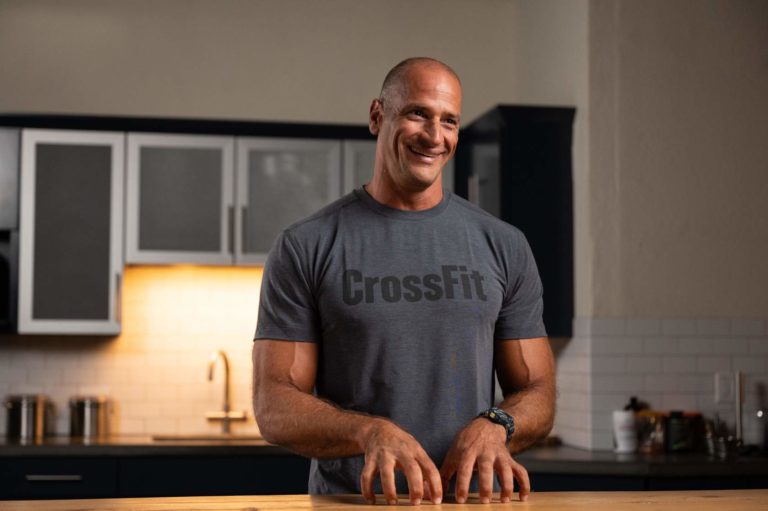In response to a recent article, a loyal reader commented that if intensity were truly power, CrossFit athletes should be jumping much more than they do. I interpreted this to mean that if intensity is power, then CrossFit athletes should jump much higher than they do as an expression of their power output.
Regardless of what the reader actually meant, the comment reminded me of Lon Kilgore’s article “The Most Powerful Human Being in the Entire Universe,” where he explained the difference between “burst” power and “sustainable” power. There’s a difference, and people often confuse the two when discussing CrossFit and intensity or power.
Burst Power
According to Kilgore, burst power is “the ability to produce large single efforts of work in very short periods of time.” Examples of burst power include a max vertical jump, a max clean and jerk, or snatch.
Power is equal to work (weight moved x distance moved) divided by the time it takes to move. So to demonstrate increased power in a vertical, we need to jump higher (given the same bodyweight).
In the snatch or clean and jerk, the distance moved and the time it takes to accomplish the lift are pretty much constant, so the path to increased power output in the Olympic lifts is lifting increased weight. To jump higher and snatch or clean more requires that we apply greater force into the ground quickly. That makes strength (including proper technique) a big component of increasing our burst power output. If we want to maximize our burst power, we should train almost exclusively with heavy and fast lifts, plyometrics, and sprints as an Olympic lifter does.
Sustainable Power
Sustainable power “is the ability to carry out lots of work in a longer, sustained period of time.” Here, we’re looking at how much work can be completed per unit of time. CrossFit time- and task-priority workouts are great examples of this.
In task-priority workouts, the goal is to complete the task as quickly as possible, with a faster time yielding a higher power output.
In a time-priority workout, the goal is to complete as much work as possible within a given amount of time, with the higher work total in that time yielding a greater power output. To demonstrate this, sustainable power output not only requires a foundation of strength (with technique) but also capacity across all 10 general physical skills.
To paraphrase Kilgore, comparing the burst power of a big clean and jerk with the sustainable power of Helen is like comparing oranges and lemons. There are definite similarities, but they are trained in different ways. Regardless, as CrossFit athletes, we want both. We want big lifts and fast met-cons. We’re also not willing to specialize in one type of power to the complete detriment of the other type. We don’t want a 40-inch vertical if it means we can’t even complete Fight Gone Bad. Developing both burst power and sustainable power simultaneously provides us with the broad, general, and inclusive fitness we need to support real-world occupations or sports.
We improve our burst power through dedicated heavy days. Multiple sets of low reps on big, compound movements, such as deadlifts, squats, and presses, build the strength that directly contributes to our burst power. This is one major reason why workouts such as 5×5 back squats, 10×1 clean and jerks, or 8×3 presses are staples of CrossFit programming.
As we increase our strength, we also improve our endurance, and consequently, our sustainable power. As we become stronger, we build a strength reserve, allowing us to operate at a lower percentage of our maximum capacity. Everyone feels fatigued in a met-con. But if my max thruster is 250 lb instead of 115 lb, then, as I work through Fran, I am calling upon much less of my total capacity to get the job done, and my body is better able to handle this demand and keep going.
This is endurance in action. Still, strength is only one part of the equation. In addition to heavy days, classic CrossFit met-cons that use lighter loads and fast work rates improve our cardiorespiratory endurance and stamina. These workouts enhance our ability to consume and utilize oxygen, as well as increase the quantity and utilization of energy substrates in our muscles, allowing us to work longer and harder.
The combination of strength days and high-intensity met-cons, delivered in an unlimited variety of combinations, makes CrossFit a unique strength and conditioning program, singularly adept at developing both burst and sustainable power. Ultimately, these two types of power blend to determine our work capacity across broad time and modal domains, or our fitness, and we draw on both as needed to conquer any challenge, adventure, sport, or mission that crosses our path.
About the Author
 Stephane Rochet is a Senior Content Writer for CrossFit. He has worked as a Flowmaster on the CrossFit Seminar Staff and has over 15 years of experience as a collegiate/tactical strength and conditioning coach. He is a Certified CrossFit Trainer (CF-L3) and enjoys training athletes in his garage gym.
Stephane Rochet is a Senior Content Writer for CrossFit. He has worked as a Flowmaster on the CrossFit Seminar Staff and has over 15 years of experience as a collegiate/tactical strength and conditioning coach. He is a Certified CrossFit Trainer (CF-L3) and enjoys training athletes in his garage gym.